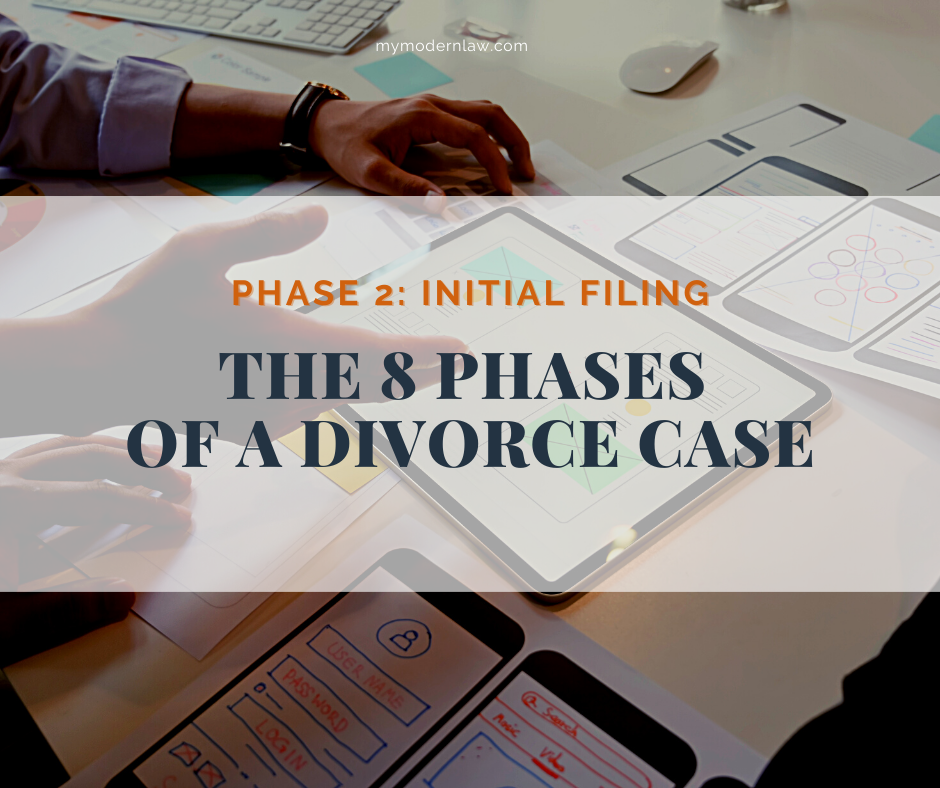In the first Divorce Case Phase article, we talked about getting to the point where you are going to file for a divorce. Now, it’s time to move forward to the initial filings, or to respond if you are the one who is getting served with the divorce papers. This is a major step, as it means you are truly starting the legal journey to the dissolution of your marriage. For many, this is an emotional time, even if they know the divorce is the best option.
When you are filing, it’s always a good idea to have a plan in mind. You need to know what it is you are going to be asking for in the divorce and how you would like for it to proceed. This will help you to create a plan for your divorce, and it can make it possible to start negotiations early if you already have a strategy.
How Long Does This Phase Take?
Like most aspects of divorce, the answer is that it can vary. In some cases, once you have the petition filed and sent, the respondent could respond right away. It might take as little as a week for initial filings to conclude, or it could take up to two months if they don’t respond. You can hope for a fast resolution but prepare for a longer one just in case. Here’s what you need to know to get started.
Filing the Petition
If you have an attorney already, you can have them help you with the petition. You can also get the petition to file for divorce on your own through AZCourts.gov. If you are filing on your own, it’s often best to check with the local court clerk first, as the county where you live might have some added requirements.
Before you can file for a divorce in Arizona, you or your spouse will need to meet the residency requirements. Either of you must have lived in the state for a minimum of 90 days before you can file. Additionally, keep in mind that you will have to file for divorce in the county where you or your spouse resides. You will file the petition at the local courthouse.
When you file, you will put in the petition what you are asking for from the divorce. This might include property, parenting time, etc.
When it comes time to file the forms, you should make at least two copies of each document. You will file the original documents with the court. A second set of the forms will need to be sent to your spouse, so they can be served. This needs to be done according to procedure, meaning a process server or deputy sheriff will need to deliver them. We’ll discuss this more below.
Typically, you will have to pay a filing fee. However, there is an application for deferral of the filing fee, which you might qualify for. This will be reviewed by the court, and if they determine you can’t afford the initial filings fee, you will not have to pay.
Once you turn over the documents to the court clerk, they get stamped with a date and time. You will sign the documents in front of the clerk, who will notarize the paperwork for you. It’s important that you then serve your spouse as soon as possible.
What Does a Process Server Do?
The service process is important, as it lets the other party know that you are filing for divorce. They will then have the opportunity to argue or accept the filing. It ensures that both of the spouses will have ample time to prepare for the divorce.
When you have filed your petition, you will have 120 days from the date it is filed to serve your spouse with the divorce papers. If you don’t, the case will be dismissed. This would mean you have to start the process over.
You can serve the documents by using a process server or a deputy sheriff that delivers the paperwork to your spouse. However, you cannot deliver the documents yourself or through the mail unless the spouse has agreed to accept the service and then signs an Acceptance of Service form. If your spouse has not hired an attorney, you will need to have them delivered to their home. If they have hired an attorney, you can have the petition sent to the attorney’s office instead.
Process servers charge a fee for the service, but it is usually affordable. However, if you can’t afford a process server, you can always have a deputy sheriff handle it and then ask the court to waive the service fee charged by the sheriff’s department. After this form has been served, you can then deliver any other documents to your ex by hand or through first-class mail.
Filing a Response
If you are the person who received the divorce paperwork, you will have to respond to them within 20 days of being served. If you live outside of Arizona, you will have 30 days to respond to the initial filings for divorce instead. If you do not respond to the petition for divorce, it could mean that your spouse will get a default divorce. This means that they will get everything they requested in the petition without you having any say in the matter.
It’s important to read through the document closely, as it might contain things that you do not agree with regarding things like spousal maintenance, property and debt claims, parenting time, etc.
In cases where you agree with everything in the petition, and you want to speed the process along, you can respond with a Consent statement. This means that you state you and your spouse agree on everything. You can file this with the court, which will make help the divorce be finished faster since nothing is being contested.
If you don’t agree, you will file a disagreeing Response if you can’t resolve issues with your spouse.
How Do You Feel?
Divorce can be rough whether you filed the petition or received it. This is a big change in your life, and you might feel anxious about it. This is normal. On the other hand, you might feel finally at peace knowing that you are no longer going to be bound to your spouse. This is normal, as well.








